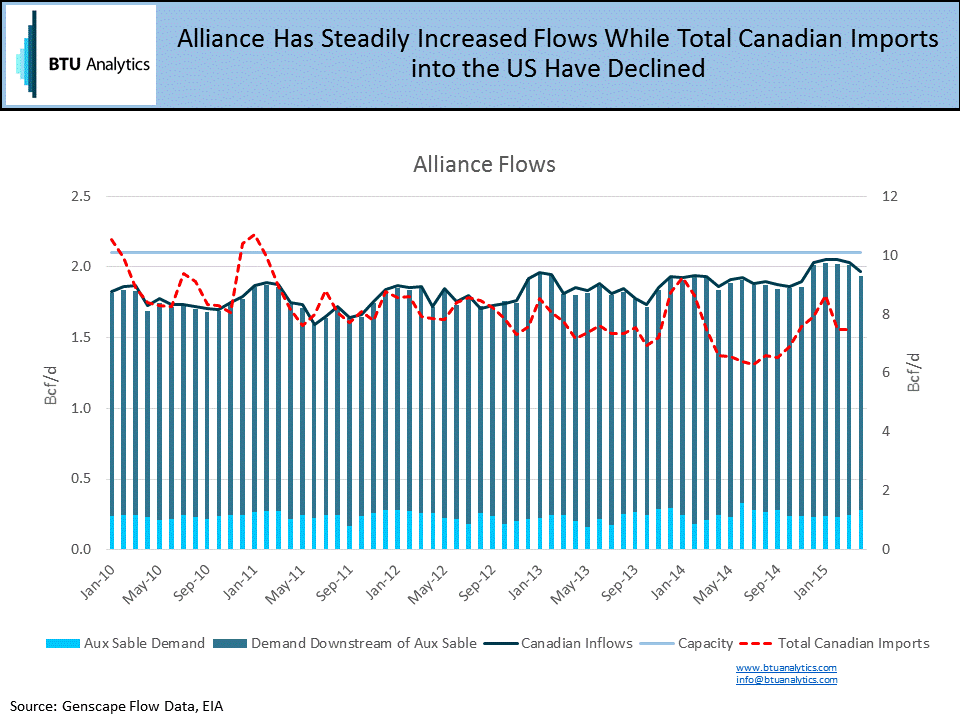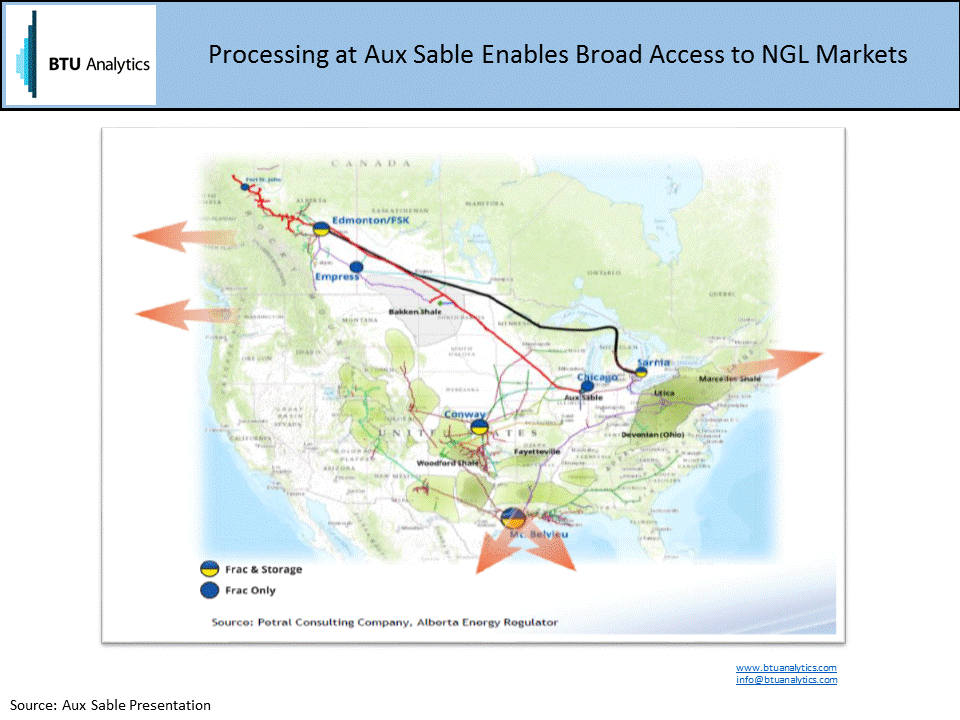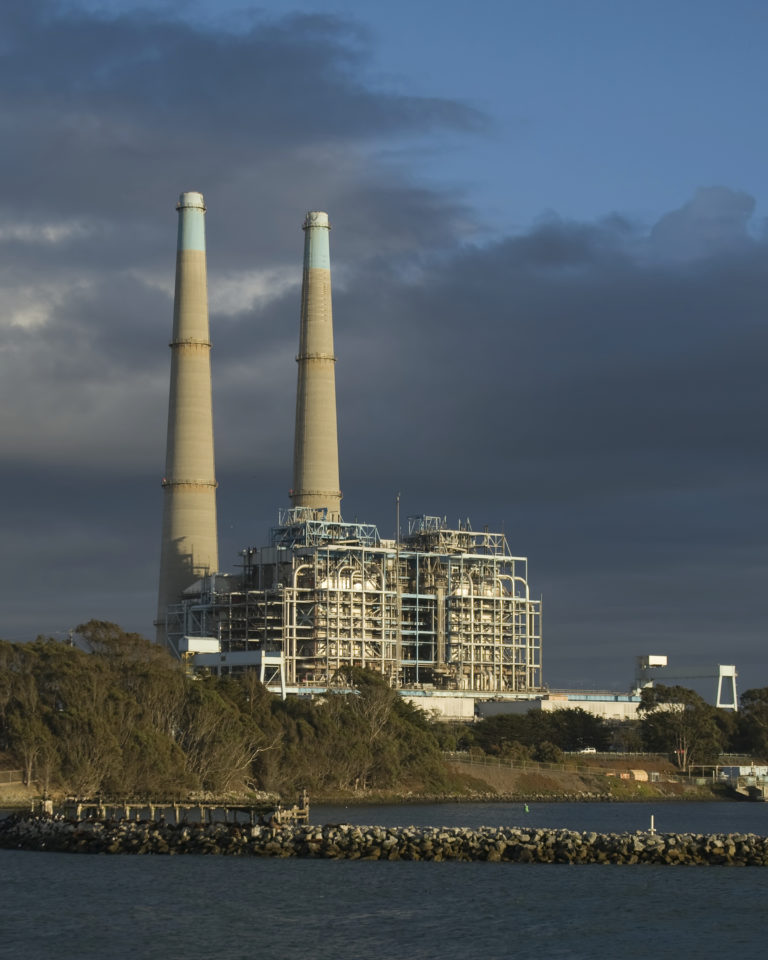Not all gas is created equal. The Duvernay Formation in Canada and the Williston Basin in the US contain liquids-rich gas and traditionally, gas from these regions has flowed into the Upper Midwest Market via Northern Border, Great Lakes, and Alliance, among others. As we mentioned in our previous post, Northeast Gas – Coming Soon to a Market Near You, this all could soon change as traditional flow dynamics are altered as a result of the continued boom in Northeast production. But are there particular dynamics that make some pipeline flows less vulnerable to the influx of cheap Marcellus gas?

Alliance has a unique advantage over its competitors, Northern Border and Great Lakes, in the fact that its main processing facility, Aux Sable located in Channahon, IL, extracts NGLs close to market and at the terminus of the pipe. This gives its natural gas liquids easy access to Midwest ethane and propane demand and the residue gas is delivered into the premium Chicago gas market and to interconnects with Vector that takes the natural gas onto Dawn.

Using gas quality data from Genscape to derive the average NGL composition on Alliance and current NGL pricing at Mont Belvieu and Conway, BTU Analytics estimates that the extraction of NGLs provides roughly $0.45 per MMbtu in additional profits beyond the price of natural gas. Additionally, the residue can fetch a higher price at Chicago than the rich gas sold into the AECO market.

Canadian producers recognized this advantage for liquids-rich gas and secured long-term contracts with Alliance and Aux Sable to provide natural gas and natural gas liquids into the Chicago market. Over the past 2 years, Aux Sable has announced a slew of contract negotiations with producers such as Seven Generations, Encana and Brion Duvernay to supply 1.3 Bcf/d of gas on the pipe through the end of the decade. Additionally, Aux Sable released plans to expand its Channahon fractionation facility by 24,500 barrels per day.
Flows leaving Alliance serve Vector and ANR, and eventually make their way to Michigan. If Nexus and Rover come to full fruition and bring an anticipated 4.75 Bcf/d of capacity to the market by the end of 2017, BTU Analytics expects to see a decent volume of traditional inbound flows displaced out of the Upper Midwest.
While Canadian gas exports to the US have been on the decline since 2008 and some expect them to continue to fall, Alliance has secured long term contracts to flow Canadian gas into the US. Northern Border and Great Lakes also have unique NGL dynamics that support long term flows, Alliance’s position bodes well for competition with Rover and Nexus gas. But questions remain. Do Nexus and Rover actually flow full? And if they do, who becomes the real losers in the Midwest Market? Breathe easy for now though Canada lovers, a steady flow of hockey, maple syrup and Alliance gas are in our future.









